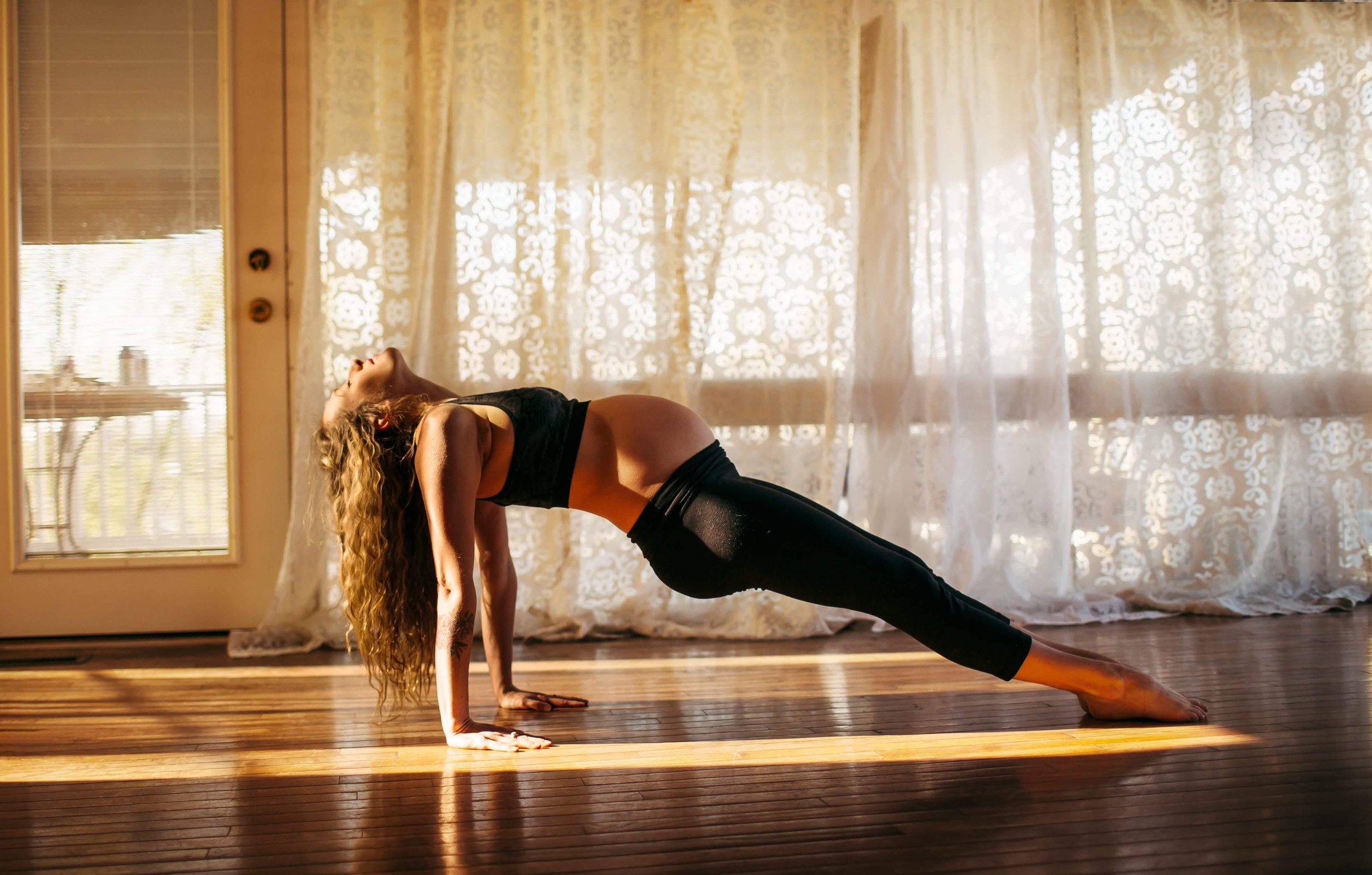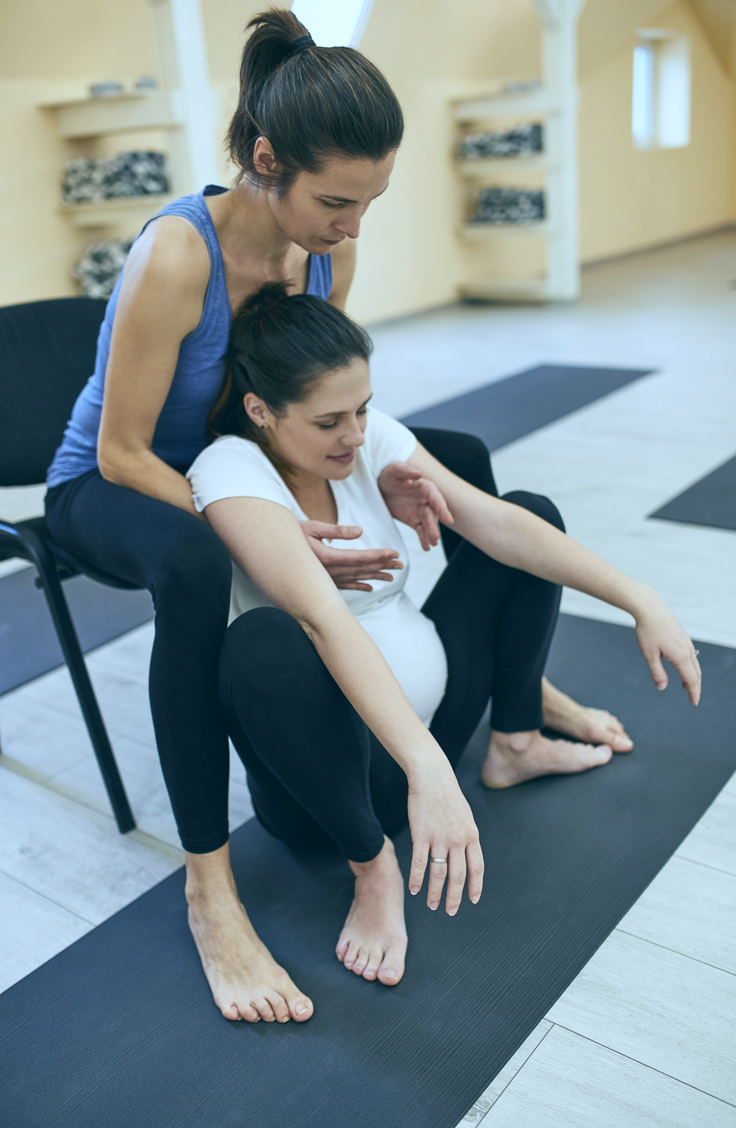Starting a Home Prenatal Yoga Practice
Many mothers consider yoga sometime during their pregnancy, but just don’t know where to begin. As a mother you will find that daily yoga practice can become a great source of stress reduction for you and your baby. Practicing yoga throughout pregnancy creates a deep awareness of body and mind, bringing balance and alignment. You might notice other benefits as well, including:
Benefits of prenatal yoga:
Good digestion
Healthy blood circulation
Light and easy breathing
Reduces tiredness and tension
Rids body of toxins
Strengthens nerves, ligaments, and internal organs
Mental and physical health and well-being
Setting up the space to practice yoga
As you’re building the baby’s nursery include your own prenatal yoga space within the room. Creating the space from the very beginning to be a place of calm. So that when you walk into the room, your automatic response is to take a deep breath and relax, which is a great reaction to have once the baby is actually occupying the room instead of your womb.
List of things we can use to create a calming space:
Essential oils
Something that lights up, like a candle, incense, or sage
Glass of water
Journal and pen to jot down notes during your practice
Pillows to use as yoga props so you feel comfortable in poses
Yoga mat
Music (bluetooth speakers and a music app on your phone, and don’t forget their chargers)
Crystals & mala (beading for meditation) for concentration tools
Clothes you can comfortably move in
What to wear?
No need for expensive leggings and sports bras to practice yoga. Wear clothes you can comfortably move freely in.
A mindful pregnancy begins here
Mindfulness is the basic human ability to be fully present, aware of where we are and what we’re doing, and not overly reactive or overwhelmed by what’s going on around us. Whenever you bring awareness to what you’re directly experiencing via your senses, or to your state of mind via your thoughts and emotions, you’re being mindful. Mindfulness meditation asks you to suspend judgment and approach your experience with warmth and kindness toward yourself and your baby.
Mindfulness is a practice you can do anywhere and anytime:
Set aside some time. It can be brief.
Observe the present moment as it is. Emotions, sensations, and questions like to pop into our minds at this time. That’s fine.
Let the thoughts pass by you. Or, if you think of something important, take a moment to write it down so you won’t worry about forgetting about it. Then come back to the present moment. Repeating that process as many times as necessary.
Return, again and again, back to the present moment.
This is a powerful but subtle practice. The practice of mindfulness is very simple, but not necessarily easy. The work is to just keep doing it. Personally, I find remembering to do it harder than actually doing it.
A Simple Meditation Practice
Sit comfortably. Find a spot that gives you a stable, solid, comfortable seat.
Notice what your legs are doing. If on a cushion, cross your legs comfortably in front of you. If on a chair, rest the bottoms of your feet on the floor.
Straighten your upper body—but don’t stiffen. Your spine has natural curvature. Let it be there.
Notice what your arms are doing. Situate your upper arms parallel to your upper body. Rest the palms of your hands on your legs or wherever it feels most natural.
Soften your gaze. Drop your chin a little and let your gaze fall gently downward. It’s not necessary to close your eyes. You can simply let what appears before your eyes be there without focusing on it.
Feel your breath. Bring your attention to the physical sensation of breathing: the air moving through your nose or mouth, the rising and falling of your belly, or your chest.
Notice when your mind wanders from your breath. Inevitably, your attention will leave the breath and wander to other places. Don’t worry. There’s no need to block or eliminate thinking. When you notice your mind wandering gently return your attention to the breath.
Be kind about your wandering mind. You may find your mind wandering constantly—that’s normal, too. Instead of wrestling with your thoughts, practice observing them without reacting. Just sit and pay attention. As hard as it is to maintain, that’s all there is. Come back to your breath over and over again, without judgment or expectation.
When you’re ready, gently lift your gaze (if your eyes are closed, open them). Take a moment and notice any sounds in the environment. Notice how your body feels right now. Notice your thoughts and emotions.
Malasana pose overview
The practice of squatting is very important, monumentally so during pregnancy. Squats strengthen and lessen stiffness in the legs, and they tone and stretch back muscles. They take pressure off the spinal discs and helps with elimination during the digestion process. They increase the flexibility and circulation of the pelvic area. In yoga, when we squat, it’s called malasana pose. Malasana is a great position to be in when you’re in labor, pushing your baby down and out of the birth canal.
There are modifications to yoga poses, depending on your fitness level, health of the pelvis and spine, and your current trimester of pregnancy. The majority of women will find the full expression of malasana difficult because it requires significant flexibility of the hips, knees, and ankle joints. Plus, as your pregnancy progresses, you’ll have to continuously relearn balance as the baby grows inside the womb. Your posture naturally changes as the baby grows. Practicing yoga, specifically this squatting pose, gives you the opportunity to stay steady on your feet throughout pregnancy and for your postpartum recovery.
Supported Malasana
Practicing malasana
Find good posture standing up tall. Starting at the feet. Shift your weight slightly too far forward, then too far backward. Side to side. Then find yourself directly centered. Lift knee caps. Activate your thighs. Tuck your pelvis slightly. Lengthen your spine. Pull shoulders up toward your ears, back and down. 3 times. Lengthen the back of your neck. The crown of your head reaches toward the sky. Beautiful. Bend knees and drop hips toward the mat and breathe here as you hold the pose. If you can’t hold this position, you can do some modifications to find steadiness.
Malasana modifications:
Lifting the heels with a blanket/rolled towel underneath
Facing a chair, lean forward and lay your top body onto the seat.
Lean your lower back against a wall
Support person sits in a chair, bracing your weight on their knees/thighs. You’re facing away from your support person while holding the squat position.
Sitting on bolsters or pillows with feet flat on the floor and knees bent.
Malasana flow:
Find yourself in your malasana pose. You are squatting and your hands are in prayer position in heart center. Inhale here. Exhale, come to standing as your hands rise mid-line of the body until they’re completely extended overhead. Inhale, drop arms out and down as you sit back into malasana. Try keeping the movement flowing with the breath and continue a few times.
Come into a resting position and notice how your body feels. If you feel exhausted after practicing prenatal yoga, it means your practice may need some adjustments. I recommend you turn to an experienced prenatal yoga instructor for guidance.
Malasana is just one pose that’s great for pregnant people. See this as your starting place. Get your prenatal yoga space organized, starting off simply and adding as you go. Try practicing this for a week. Establishing routines is a great way to cope with this transition into parenthood. Slowly build your practice and soon the two of you will be ready to start practicing baby yoga.
Written by
Chelsey Bishop, Prenatal Yoga Instructor/Doula/Childbirth Educator



